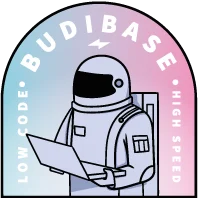
Think fast
Thoughts and ideas on how to build tools, automate workflows and speed-up the workplace.
How to Build an Employee Information Form
Employee information forms are some of the most common data collection tools around. They’re a crucial part of onboarding workflows in just about every company in the world. But, the majority of teams use dated tools, like spreadsheets, fillable PDFs, email chains, or even pen and paper, to gather details about new colleagues. This creates all sorts of problems, including inaccuracies, disorganization, and security issues. Today, we’re diving deep into how to build a dedicated tool for capturing employee information.
Ronan McQuillan
Jan 26, 2024
A beginners guide to web application development (2024)
It was the year 2010, I had an idea for a web application which would allow my family and I to share images, organise shopping, populate a shared calendar, and store bills. My family was terribly disorganised. We needed this! This idea was going to make me 💰💰💰. There was a small complication with my vision - I didn’t know how to build a web application. But thankfully, I could build a static site with HTML and CSS so it couldn’t be that hard, right?
Joe Johnston
Jan 24, 2024
How to Build a Web App: Beginner's Guide (2024)
Picture by Med Badr In this post, I’m going to show you EXACTLY how to make a web app. In fact, this is the process I’ve used, revised and perfected over the last 5 years. I’ve used this exact process, or a version of it to build over 15 applications of all shapes and sizes. For me, this is 100% the best way to build web applications. But, before we start the tutorial, a quick recap on what we define as a web application at Budibase.
Joe Johnston
Jan 23, 2024
Budibase Cloud January 9th Incident
On January 9th, a subset of Budibase Cloud customers were unable to log in. We were able to trace this problem back to data corruption in our production database, and resolved the problem by rolling our database back to a known-good snapshot. The snapshot we rolled back to, at the time we rolled back to it, was 87 minutes old. Any changes made by customers on Budibase Cloud in those 87 minutes were lost.
Sam Rose
Jan 16, 2024
Take your forms a step further with the multi-step form block
Speed and quality often sit on opposite ends of the spectrum in application development. Yet, we believe they can coexist harmoniously. We’re excited to introduce an easier, faster way to create multi-step forms. Our journey began with a simple observation: the existing form block lacked the flexibility to handle multi-step processes to easily handle multi-step processes. This limitation forced users to resort to intricate workarounds, which were neither ideal nor efficient.
Jamie Birss
Jan 9, 2024
How to Create Forms for SQL Databases in 3 Steps
Databases are vital for every business. But as soon as you create your database, a question arises. How can you maintain the information you store? Of course, you could write out queries manually, but you’ll also want a way for less technical staff to enter data. This means building forms. Today we’ll look at how to create forms for SQL databases. You can also use forms to limit access to your database.
Ronan McQuillan
Jan 3, 2024
5 Filemaker Alternatives & Competitors for 2024
Claris FileMaker Pro is one of the oldest names in the low-code space. Claris is a subsidiary of Apple, so FileMaker was originally conceived as essentially being a Microsoft Access alternative for Mac users. This is an important piece of context because it means that FileMaker started life as an integrated relational database engine and GUI. This remains its core offering, but it’s also evolved to include functionality around building custom interfaces and automations.
Ronan McQuillan
Jan 2, 2024
Top 5 Appian Alternatives & Competitors in 2024
Appian is one of the most popular low-code platforms on the market today. Founded in 1999, it’s also one of the older players in this space. Perhaps more than any of its competitors, Appian is highly focused on enabling teams to automate manual processes, without necessarily having previous development experience. On top of this, it offers all of the same kinds of functionality that we see with other platforms in this space - like a visual interface builder, data management tools, and other features for speeding up internal app development.
Ronan McQuillan
Jan 2, 2024